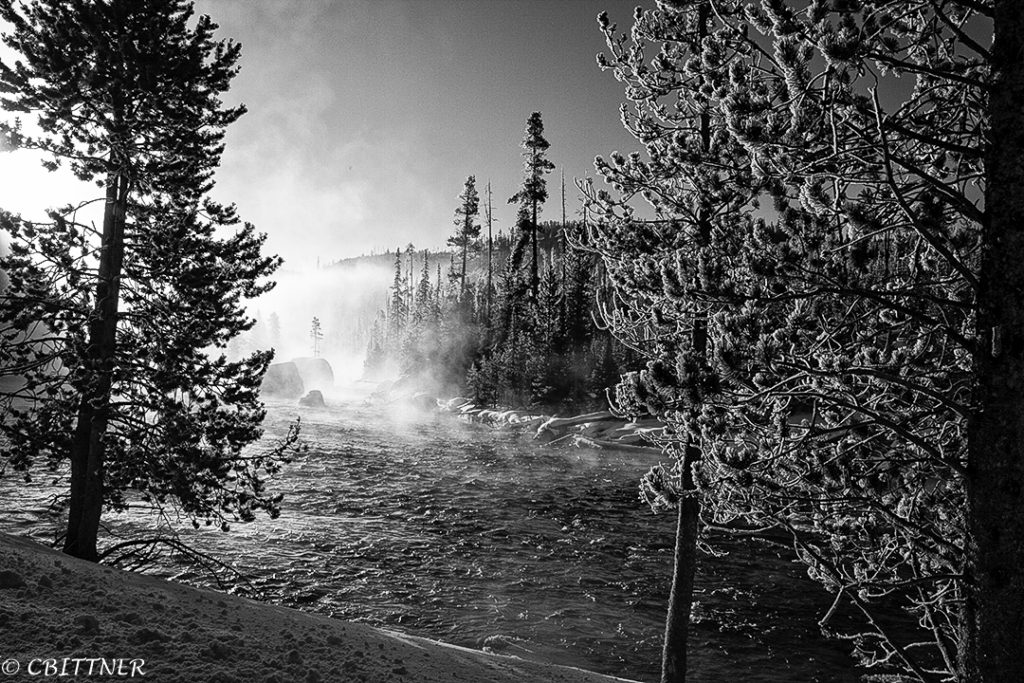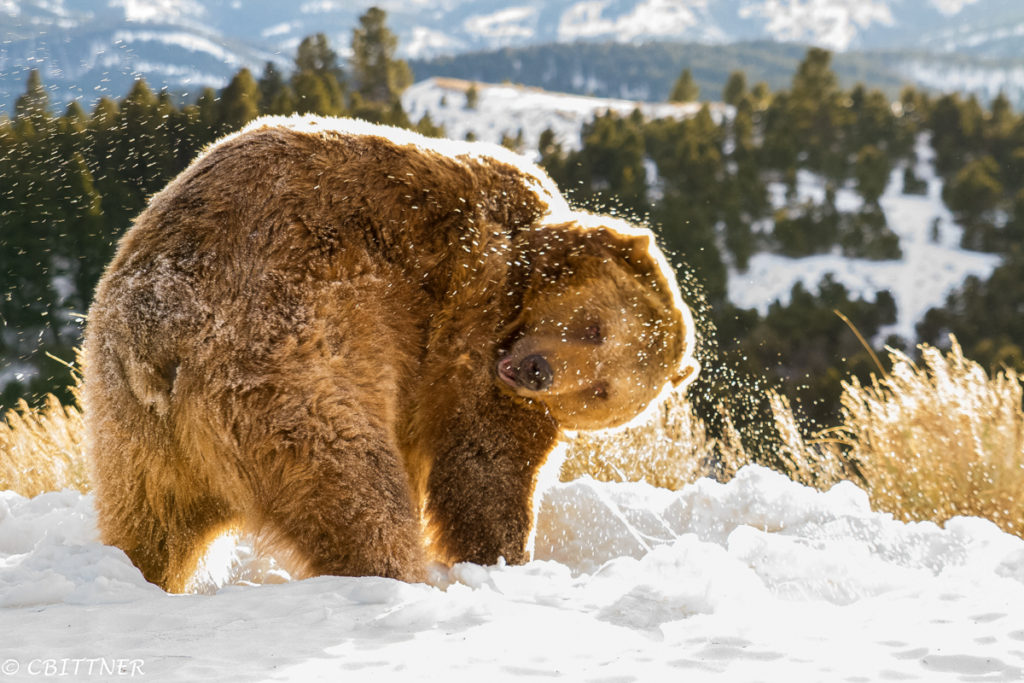
We got up before dawn to get here and capture the sun rising. The park is closed and you have to get special permits and take a snow cat in. It was amazing.
Views of Sequim, the Olympic Peninsula. . .and beyond

We got up before dawn to get here and capture the sun rising. The park is closed and you have to get special permits and take a snow cat in. It was amazing.

This funny bear kept plunging his head in the snow and then shaking head violently creating the snow spray and lovely drool lines (if you look below his left eye there are two going to the ground.)
Over three million people visit Yellowstone each year. Popular areas can get crowded by midday. But the park is so large it’s not hard to find solitude; early risers also can beat the crowds, have better wildlife sightings, and, of course, better light.
I enjoyed people-watching. This woman was just too cute to ignore.
At times I felt like I was the only one in the park who didn’t insert myself, DH, or both of us into our photos. Photographers, m-a-n-y photographers, didn’t take shots unless one, several, or all the people in their group were in it.
I like people. Really! But it did mean long waits occasionally until another photographer’s shoot/reshoot/another shot was done.
And then there were people who were just downright interesting. Like the couple next to us at dinner one night. First there were the selfies: her with a glass of white wine. Then a toast. Then both facing the camera. Then…what? A little bear dressed in a knit hat and jacket joined them at the table…don’t ask me…but it did smile for the camera.
Here are more views of Yellowstone. Above is the Tower Fall region in the northeastern corner of the park.
Also in the northeastern region is the Lamar Valley. This beautiful high desert is rich with wildlife.
The Gardiner River is in the northwestern side of the park. This view was taken south of Mammoth Hot Springs.
Canary Springs, above, is part of Mammoth Hot Springs.
This final view is taken from the Upper Terrace of Mammoth Hot Springs, looking down toward the resort. You may be able to see the red roofs of old Fort Yellowstone to the right.
Tomorrow I’ll show you some of the other tourists at Yellowstone and then we’ll return to Sequim.
Lest you get the impression that Yellowstone is only about geysers and hot springs, today I’ll show you other views of this magnificent park. The landscape is as varied and beautiful as any I’ve seen; it is a land of superlatives. Its 2.2 million acres is as large as the states of Maryland and Delaware combined with much diverse terrain. Above is the Grand Canyon of the Yellowstone River.
Earliest human habitation of the Yellowstone area is estimated to have begun more than 10,000 years ago. Over 400 human habitation sites have been documented throughout the park. Archaeologists have discovered stone tools including knives, shaping tools, and projectile points. More recent Native American inhabitants have included Blackfoot, Crow, Shoshone-Bannock, and Nez Perce tribes. (Hayden Valley is shown above.)
Yellowstone became a national park in 1872, the world’s first. It has been called “America’s best idea” and was the precursor to the establishment of our current National Park System. Its early management progressed in fits and starts with underfunded and ineffective park administration. The park’s natural resources were abused and development of tourist facilities chaotic. Settlers moved in without permits. In response to this, before National Park Service rangers were organized, the U.S. Army was the official custodian of the park for 30 years. (Above is near Bunsen Peak, south of Mammoth Hot Springs.)
The Army patrolled year round to reduce poaching. They also improved access to the park and constructed public and administrative facilities. An early camp constructed at Mammoth Hot Springs evolved into Fort Yellowstone. Many of the original buildings still exist and are used by the National Park Service. Other historic structures were built to accommodate tourists, including Old Faithful Lodge.
I’ve never seen quite so many saturated, dramatic, and glorious colors in nature as I did in Yellowstone. Nor so much of it. For this you can thank thermophiles, organisms that thrive in high heat environments. And because their heat tolerances vary, there is different coloration in different heat zones. One stunning example of the variation, above, is Grand Prismatic Spring. At a distance, even its steam runs a rainbow spectrum.
Outfalls from springs can move into more mustard-toned spectrums as water cools.
Many pools where the underground passages are open and reach deep into the earth range from deep turquoise to shades of blue-green and emerald.
Closer views can be otherworldly..but then, so can the entire landscape. In places it can have the chalky lifelessness of a moonscape. And in others the land is alive with color and the vibrancy of active geology.
Yellowstone National Park is a dynamic hotspot of geology in action. A vast swath of the southwestern part of the park is a volcanic caldera formed by an eruption that sent about 600 cubic miles of ash across much of what are now the western United States. (By comparison, this was about 2,400 times more material than Mt. St. Helens sent up in its impressive explosion in 1980.) Geologic features throughout much of the park highlight what heat, water, minerals, and time can create. Yellowstone has the largest collection of hydrothermal features on the planet.
Heated waters surface and flow, changing direction and volume over time. The effects can be stunning. The top two photos are from Mammoth Hot Springs in the northeast corner of the park.
Vistas can be filled with steam from fumaroles, holes in the earth’s crust through which steam escapes. If I’ve got the details right, in most places the earth’s crust is over 20 miles deep. In Yellowstone it’s about 3 miles thick, closer to the earth’s surface than in most other parts of the world. There are about 10,000 features known to exist in Yellowstone’s geyser basins.
The geothermal features in Yellowstone are so unique that it was designated a United National Biosphere Reserve site in 1972.
In parts of the park it seems as if everywhere you look something is steaming, boiling, or erupting. I’ve never seen so much amazing, restless earth before.